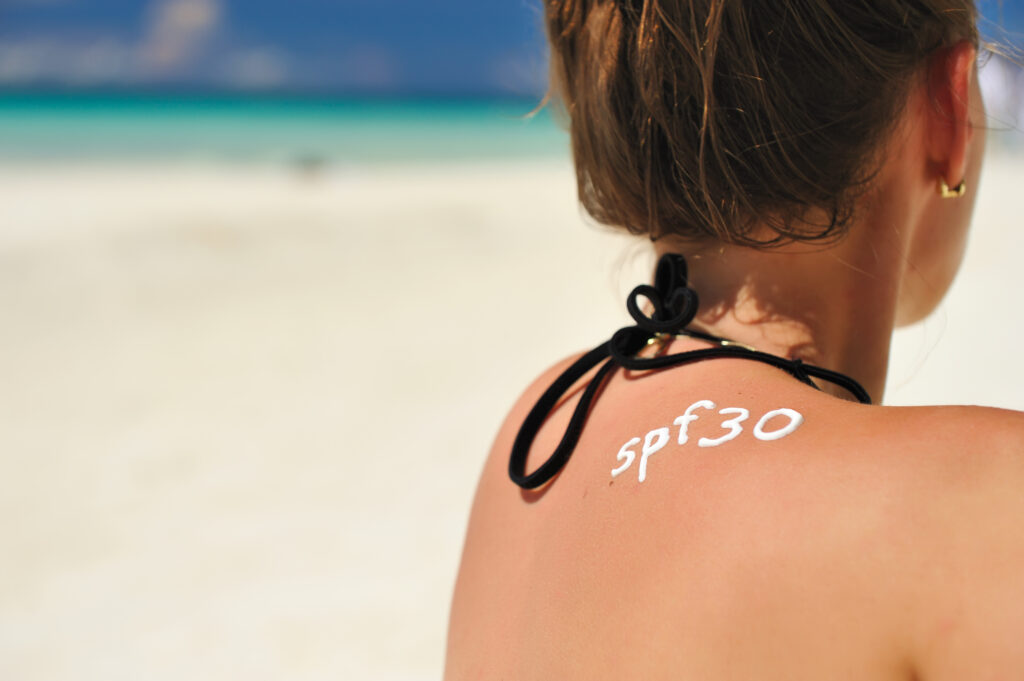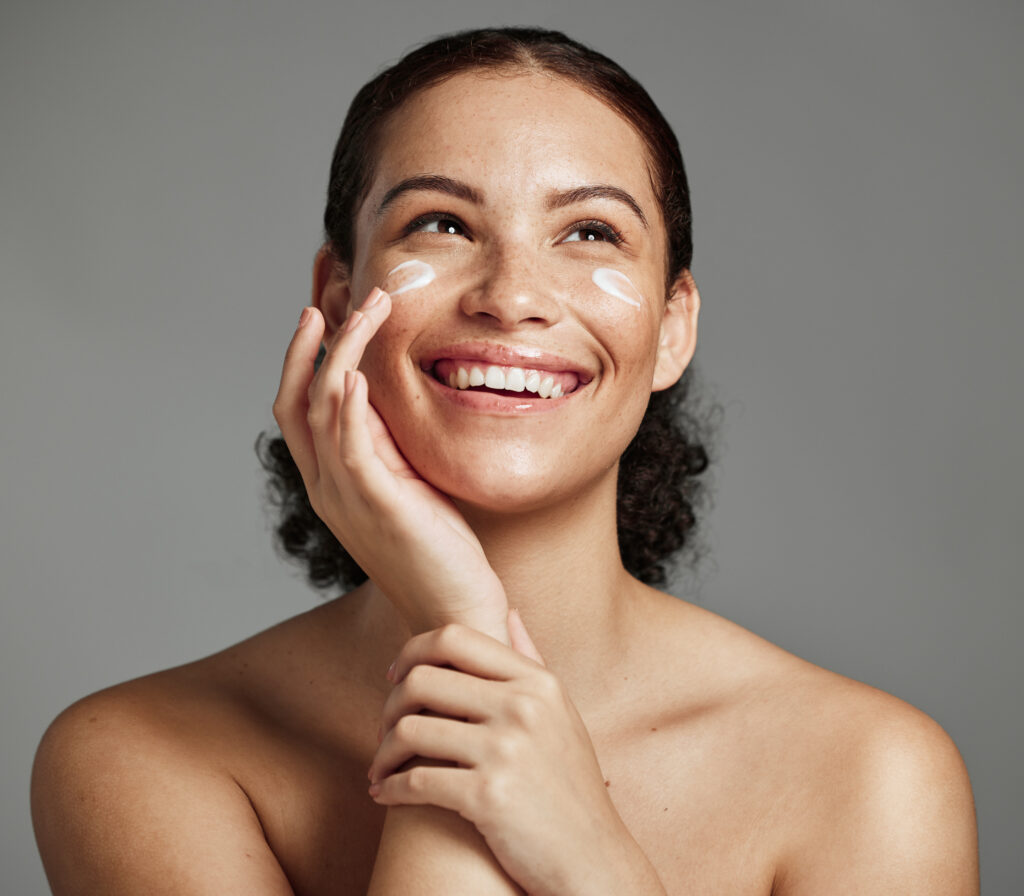If you’ve heard it once, you’ve heard it a thousand times: Sunscreen is an absolute must when it comes to your skin care routine. While most people know how vital it is to apply sunscreen on a daily basis, the discussion around just how to apply it is a bit less ubiquitous.
And it’s extremely important to put your sunscreen on the right way, so it protects your skin as well as possible. Not all sunscreens are the same and not all skin types are the same, so that alone creates the need for continued education when it comes to SPF.
Here are some common mistakes people make with sunscreen — and how to correct them.
Not Knowing The Difference between Chemical And Physical Sunscreens
Sunscreen is important because it can serve as our first line of defense against damage caused by the sun’s ultraviolet (UV) rays, which are known to cause skin cancer. In addition to preventing cancer, sunscreen can protect your skin from . Signs of premature aging caused by sun damage include wrinkles, reduced elasticity in the skin and sun spots. This process occurs at a cellular level and may take years to fully manifest as full-blown sun damage. Thankfully, wearing sunscreen regularly can offset some of the problems.
Your sunscreen works in one of two ways: it will either block the sun’s rays or absorb them. Physical sunscreens, also known as mineral sunscreens, do the job of blocking and deflecting the sun’s rays, preventing them from ever reaching your skin. Chemical sunscreens, on the other hand, will actually absorb the sun’s rays through chemical bonds.

Not Choosing The Right SPF
One of the most important steps when it comes to applying sunscreen is making sure you have the right SPF. According to the American Academy of Dermatology, you should use a broad-spectrum sunscreen with a minimum of 30 SPF. A broad-spectrum sunscreen will block both types of cancer-causing light rays: ultraviolet A (associated with skin aging) and ultraviolet B (associated with skin burning).
Research suggests that 30 SPF can block 97% of the sun’s UVB rays. By contrast, a product with an SPF of 50 blocks out 98%, which is only marginally more. Despite this fact, dermatologists say that there’s no harm in hiking up the SPF count.
Dr. Beth Goldman, a skin cancer specialist and dermatologist at the Central Dermatology Center in North Carolina, spoke to Verywell Health to explain why increasing your SPF even just a bit can be helpful.
“The higher SPF will often help with longer wavelength coverage of UVA which, while you do not burn from them, those rays are immunosuppressive and promote cancer and photoaging,” she said.
Applying Spray-On Sunscreen Too Far From Skin
Sunscreens come in so many formats these days, from creams and gels to sticks and sprays. Creams work well for dry skin and faces, while gels are great for hairy areas, like male chests. Sticks are good to use around the eyes. Powders are useful for quick touch-ups after your initial application and go well over your makeup.
Sprays are great for squirmy children because they are easy to apply. However, you should note that these shouldn’t be inhaled or applied near heat or while smoking. Current FDA regulations on testing and standardization don’t apply to spray sunscreens, although they are regularly evaluated.
When using sprays, make sure to apply enough. Get close (about 1 inch away) before you spray and rub the sunblock in, just as you would with a cream or other type of sunscreen. Otherwise, you aren’t necessarily getting the SPF protection you need.

Not Using Enough Sunscreen
In terms of how much sunscreen to apply, experts suggest measuring separately for your face and your body. For the face, it’s suggested to use a dollop the size of a nickel or the size of your finger from the tip to the first crease, which is approximately .04 ounces. For the body, you’ll need a shot glass full, which is about one ounce.
As far as when to apply sunscreen — for both the face and the body — experts suggest applying it 15 to 20 minutes before you are exposed to the sun so that it can be properly absorbed by the skin. And don’t forget to don other sun-protective items, like hats and long-sleeved shirts. Stay in the shade when you can.
Forgetting To Reapply
Another key consideration when it comes to sunscreen is how often to re-apply. If you’re active, most sources suggest applying sunscreen every two hours. However, if you’re not outdoors and not active, one layer should suffice for the entire day.
The AAD recommends reapplication after swimming or sweating as well. Some sunscreens may be water-resistant and will last longer (see bottle or package instructions), but stick to a two-hour reapplication time even with these sunscreens.
Not Using A Different Sunscreen For Your Face
Unfortunately, it isn’t always one-stop shopping when it comes to buying sunscreen for the face and body. The formulas made for your body can be used for your face. However, they are typically heavier and contain ingredients that can lead to breakouts for those with sensitive or acne-prone skin.
New York-based dermatologist Dr. Marisa Garshick spoke to Insider to shed light on exactly why you’re better off grabbing a sunscreen specifically made for your face.
“Sunscreens designed for the face are often non-comedogenic (or, oil free), so they’re not going to clog the pores. And sometimes they include other additives that make it more gentle on the skin,” she said.

Furthermore, sunscreens made for the face typically don’t contain fragrances, which are often found in regular sunscreens and can be irritating to the skin. Sunscreens for the face may also be formulated specifically for different skin types, like oily or sensitive.
As an aside, some physical sunscreens contain materials that can leave a pasty white cast on the skin, which is not a good look, especially for those with darker skin tones. However, today’s sunscreens are much less visible than ones from the past. And you can now get tinted sunscreens, like this one from Sun Bum, which may be a good option for those who want to avoid that side effect.

While it may seem like a steep learning curve, when you apply your sunscreen consistently it’ll start to feel like a natural part of your daily routine.
This story originally appeared on Don't Waste Your Money. Checkout Don't Waste Your Money for product reviews and other great ideas to save and make money.


